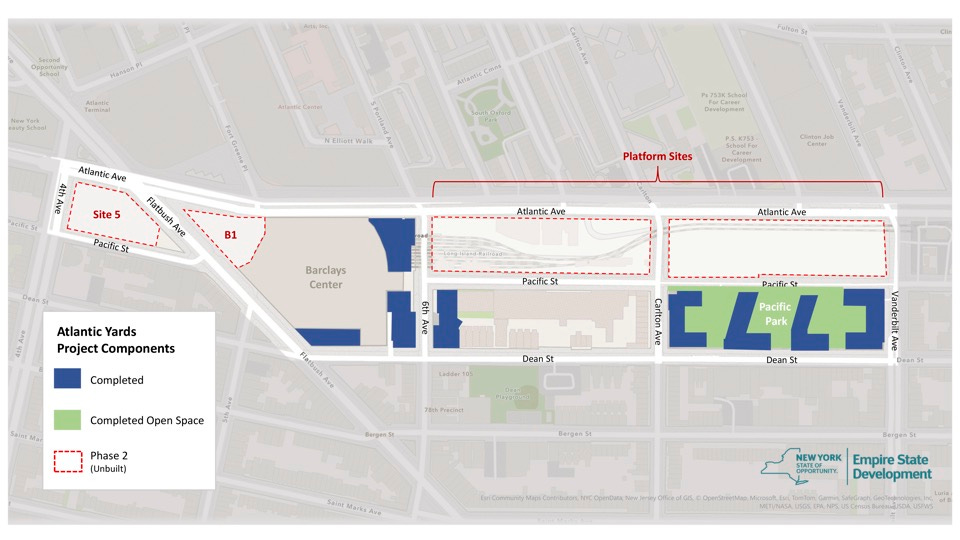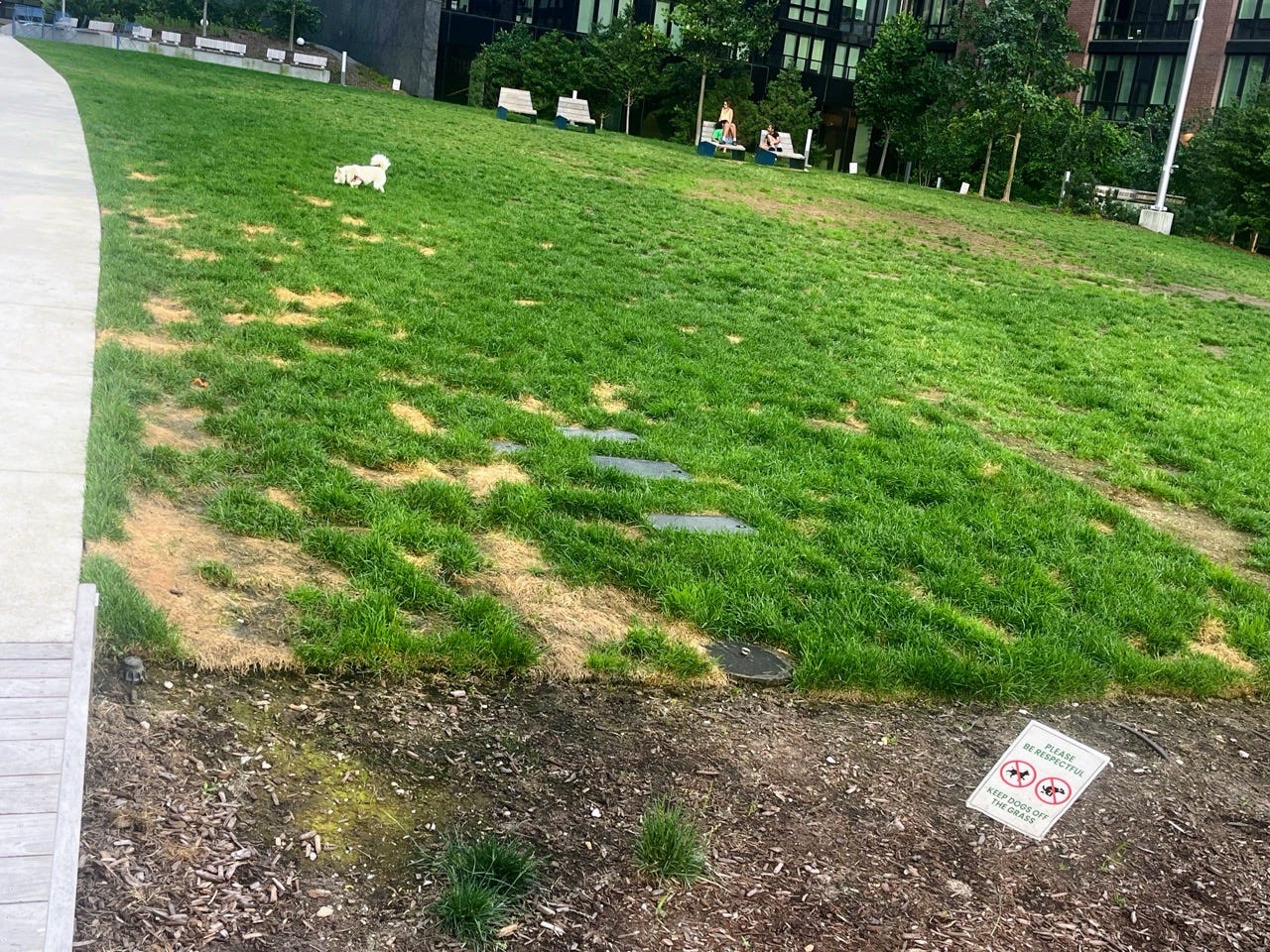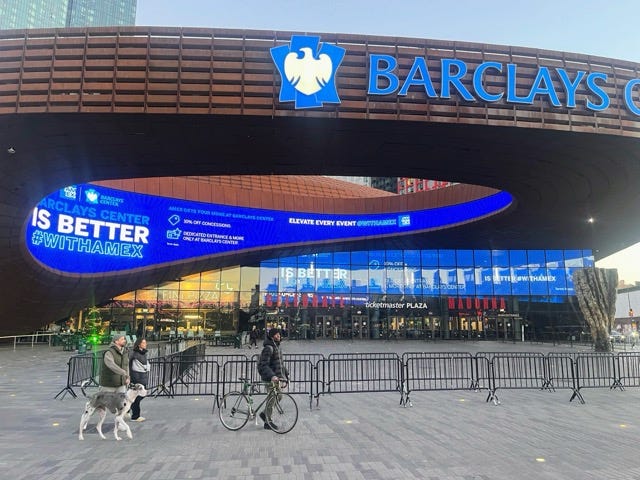Beyond Height & Density, Key Questions About "Pacific Park" Open Space.
The Pacific Park Conservancy is an unaccountable phantom. Is the new joint venture even involved? Also, shouldn't the arena operator have to pay for a permanent plaza?
Last week, I wrote about key questions regarding height and density to be discussed at the first Atlantic Yards/Pacific Park workshop on Nov. 18 (see link below).
They include the amount of public concessions sought, the cost (in terms of trade-offs) for affordable units, the site’s carrying capacity, the new timetable, and need for accountability and trust.
Workshop on Height & Density Ignores Plan for Two Towers Across from Arena, Hints at New Configuration Over Railyard
This week Empire State Development (ESD), the state authority overseeing/shepherding Atlantic Yards/Pacific Park, announced a new process purportedly seeking public input to shape the project’s future.
How can much can we trust a process that’s deliberately disingenuous about plans for Site 5, the parcel catercorner to the arena slated for a giant two-tower project?
Or a process that leaves the two railyard blocks blank on the map above, failing to tell us about the bulk and height of the six towers already approved—a baseline for discussion of changes?
That’s on Empire State Development (ESD), the state authority that oversees/shepherds the project.
Open space: what’s next?
While height and density surely could take up more than two hours of the workshop, we shouldn’t forget the issue of open space.
For example, would changes in the configuration of towers—say, taller, narrower buildings—lead to more open space, as suggested the graphic below? (More residents, thanks to additional requested density, would require more open space.)

With the failure to build the indoor Urban Room atrium, once slated to be part of the B1 tower looming over the area, can new publicly accessible indoor space, administered by a nonprofit steward not associated with the project developers, be provided at Site 5, as the coalition BrooklynSpeaks has suggested?
Open space: who’s in charge?
With 2.7 acres of open space, built, what about the rest of the planned 8 acres?
More than three weeks ago, I queried ESD about an issue I’m sure they see as relatively small.
If the incoming joint venture, involving Cirrus Real Estate Partners and the development firm LCOR, steps into the obligations of the project’s master developer, what does that mean for the Pacific Park Owners Association and the Pacific Park Conservancy, which the owners fund to oversee the project open space?
Is the joint venture taking over those positions? Practically speaking, does Cirrus/LCOR have someone monitoring the Conservancy’s email and phone?
That was partly a loaded question, since, the metal plaque affixed to the entrance stanchion contains a number, 347-292-6479, which doesn’t work
At a public meeting November 6, 2024, a representative of then-master developer Greenland USA said that a contractor was expected soon fabricate signage with a new, correct phone number, 646-930-4852.
That never happened, so does ESD have an estimated time of arrival for that new signage?
I didn’t mention—as I just discovered—that neither phone number works right now. (The Conservancy’s email, by the way, is conservancy@pacificparkbrooklyn.nyc. My email there didn’t bounce back,)
Still, I didn’t get any answers from ESD. Maybe we’ll learn more at the meeting Tuesday.
What’s next for the Conservancy?
I suspect that the Conservancy’s contracts with its security and maintenance firms persist, and that, for example, work remedying damage to turf—significantly from dogs urinating on off-limits lawns—continues.
However, with no website, dedicated staff, or schedule of any public meetings, the Conservancy remains a phantom, having sacrificed public credibility.
Certainly neighbors upset about noise from the dog run, as well as dog owners peeved about peremptory changes in dog run hours, don’t feel the Conservancy has been responsive.
A new Atlantic Yards/Pacific Park oversight body, BrooklynSpeaks suggested in 2022, could try to ensure that the project’s open space is “truly open space.”
Today, is the issue oversight, or does the open space enterprise need an overhaul, with a larger role for public entities?
Open space: what about the plaza?
While the arena plaza likely won’t be part of the discussion Tuesday, it should be.
Could the plaza, which would become permanent if the bulk of the B1 tower is moved to Site 5, be mapped as parkland and overseen by the city—or, at least, a partly public entity?
BrooklynSpeaks has suggested that the recently enriched arena operator (and Brooklyn Nets/New York Liberty owner) Joe Tsai should fund a quality of life enforcement unit in exchange for making the plaza permanent.
That would represent important reciprocity for arena impacts like illegal parking and plaza noise. But why not ask for more?
After all, the sponsored plaza, now known as Ticketmaster Plaza, is crucial to arena operations and is a canvas for lucrative advertising and promotion.
The plaza was never studied or assessed, since it was an accident, due to the failure to build B1. If it’s made permanent, the public should get a piece of the upside.





